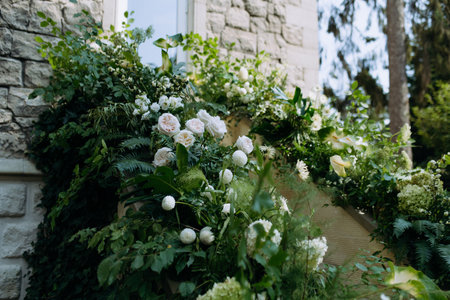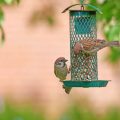Understanding the Unpredictable UK Weather
When it comes to choosing outdoor lighting fixtures for your home or garden in the UK, one of the first things you need to consider is our famously unpredictable weather. From brisk Scottish winds and sudden Welsh downpours to those persistent English drizzles, Britain’s climate can be challenging to say the least. You might wake up to glorious sunshine, only for the sky to turn grey and unleash a shower by lunchtime. It’s this ever-changing weather that makes picking the right outdoor lights more than just a matter of style; it’s about practicality and durability as well. Whether you’re living along the blustery coast or tucked away in a sheltered suburban cul-de-sac, understanding how our local climate affects outdoor fixtures will save you time, money, and quite a bit of hassle in the long run. So before you rush out and buy that fancy lantern or sleek wall light, take a moment to think about what British weather really means for your outdoor spaces.
Essential Features: What to Look for in Outdoor Lights
When selecting outdoor lighting fixtures for your home in the UK, its wise to prioritise certain features that can stand up to our famously unpredictable weather. While style and aesthetics are important, the practical side of things—like waterproof ratings, rust resistance, and overall durability—should come first if you want your investment to last through many a rainy season and blustery night.
Key Characteristics to Consider
| Feature | Why It Matters |
|---|---|
| Waterproof Ratings (IP Rating) | Ensures protection against rain, sleet, and occasional snow. A higher IP rating (like IP65 or above) is recommended for exposed outdoor areas. |
| Rust Resistance | With the UK’s damp climate, fixtures made from stainless steel, aluminium with powder coating, or treated brass help prevent unsightly corrosion. |
| Durability | Look for robust construction using quality materials; this includes toughened glass and UV-resistant plastics that won’t become brittle over time. |
The Importance of Waterproof Ratings
In British weather, a sudden downpour is never far away. The Ingress Protection (IP) rating system tells you how well a fixture is sealed against moisture and dust. For lights installed in fully exposed locations, an IP65 or higher is ideal. For sheltered porches or under eaves, you might get by with IP44, but always err on the side of caution if you’re unsure.
Choosing Materials That Last
If you’ve ever dealt with a rusty lantern or flaky paint on garden lights, you’ll know why material choice matters. Opt for fittings described as ‘marine grade’ or specifically marketed as rust-proof. Stainless steel and powder-coated metals are popular among UK homeowners because they hold up against driving rain and salty air—especially important if you live near the coast.
A Practical Tip from Experience
Don’t forget to consider how easy it will be to maintain your chosen light fixtures. Removable covers and accessible bulbs make life easier when it’s time for a quick clean or replacement—because nobody wants to be fiddling with a screwdriver in the pouring rain!
![]()
3. Popular Fixture Types Suited for British Gardens and Driveways
When it comes to selecting outdoor lighting for your British home, it’s important to choose fixtures that not only endure the UK’s unpredictable weather but also complement the unique charm of British architecture and landscaping. Traditional styles such as classic lanterns, wall-mounted coach lights, and Victorian-style lamp posts have stood the test of time in many UK gardens and driveways. These fixtures, often made from robust materials like cast iron or weather-resistant aluminium, blend seamlessly with period properties and classic brickwork, adding a sense of heritage and warmth.
For those with a taste for modernity, contemporary designs are gaining popularity across the UK. Sleek stainless steel bollard lights, minimalist up-and-down wall lights, and integrated LED pathway markers offer a clean and subtle aesthetic that suits modern townhouses and newly landscaped gardens. These fixtures tend to focus on energy efficiency and low maintenance – a real boon considering our wet winters and occasional summer downpours.
Many homeowners now opt for a mix of both traditional and contemporary fixtures, allowing them to highlight architectural features while providing safe illumination along driveways and garden paths. The right combination can accentuate the old-world elegance of a cottage or bring out the crisp lines of a new build. Whichever style you favour, always look for fittings rated for outdoor use, with proper sealing against rain and damp – after all, the British weather is nothing if not persistent.
4. Energy Efficiency and Sustainability in Outdoor Lighting
When it comes to outdoor lighting in the UK, energy efficiency and sustainability are not just trendy buzzwords—theyre practical necessities. Our unpredictable weather, frequent rain, and limited sunshine make it all the more important to choose lighting solutions that are both eco-friendly and robust enough for British conditions. Thats where LED and solar-powered fixtures come into their own, especially when youre aiming for a setup thats cost-effective and kind to the environment.
Why LED Lights Are a Smart Choice
LED technology has come on leaps and bounds over the years. Unlike traditional bulbs, LEDs use much less electricity while still providing bright, reliable light—perfect for those long, dark UK evenings. They also last much longer, reducing both waste and maintenance headaches. If you’re after something that will stand up to drizzle, fog, and the odd frost, look for LEDs with an IP65 rating or higher.
The Case for Solar-Powered Fixtures in the UK
You might wonder if solar lights can cope with our famously overcast skies. Modern solar technology is far more efficient than it used to be; many products now include larger panels or backup batteries so they can collect and store energy even during grey days. This makes them an excellent choice for gardens, driveways, or patios where running mains cables would be a chore.
Comparing Outdoor Lighting Options
| Type | Average Lifespan | Weather Resistance | Energy Source | Best Use Case |
|---|---|---|---|---|
| LED (Mains-powered) | 25,000+ hours | High (IP65+) | Mains Electricity | All-weather illumination for paths & entrances |
| Solar-powered LED | 15,000+ hours | Moderate to High (check IP rating) | Solar Energy + Backup Battery | Remote areas of garden or patios |
A Long-Term Perspective from Experience
From personal experience—and a bit of trial and error over many a wet British autumn—opting for quality LED or advanced solar-powered fixtures pays off handsomely. Not only do you save on your energy bills, but you also avoid the bother of constantly replacing bulbs or fixing water-damaged fittings. When choosing outdoor lighting for your home, prioritise options that balance sustainability with resilience against our unique weather patterns. Your wallet—and the planet—will thank you in the long run.
5. Installation Tips for All-Weather Longevity
When it comes to outdoor lighting in the UK, the way you install your fixtures is just as crucial as the type you choose. British weather is famously unpredictable, so a few practical steps during installation can save you a lot of hassle down the line.
Choose Robust Materials and Proper Placement
First and foremost, select fixtures made from rust-resistant materials such as stainless steel or powder-coated aluminium. Avoid placing lights in areas prone to pooling water or direct splashback from gutters and roofs. Raise lights slightly above ground level if possible, and opt for fixtures with high IP ratings—IP65 or above—to ensure they’re truly weatherproof.
Secure Fixings Against Wind and Frost
Heavy winds are not uncommon, so make sure all fittings are tightly secured to sturdy surfaces using weather-resistant screws and brackets. For wall lights, drill into solid brick or stone rather than mortar where possible, as this offers better long-term stability. In exposed areas, consider additional bracing for lamp posts or freestanding lights.
Seal Connections and Use Outdoor-Rated Cables
A common pitfall is neglecting electrical connections. Always use outdoor-rated wiring and fully waterproof junction boxes. Apply silicone sealant around cable entries and joints to prevent moisture ingress. It’s also wise to route cables through protective conduit, especially if they run underground or along exterior walls.
Routine Maintenance Matters
No matter how well you install your outdoor lighting, regular checks are essential. Inspect seals and gaskets for wear after storms or frosts, and clear away leaves or debris that might block drainage holes. A quick wipe-down can also help prevent the build-up of grime that accelerates corrosion.
By taking these sensible precautions during installation and upkeep, you’ll ensure your outdoor lighting continues to brighten your home safely through many a British winter—and summer drizzle too!
6. Balancing Safety and Aesthetics in Outdoor Lighting
When it comes to outdoor lighting in the UK, striking the right balance between safety and aesthetics is essential. On the one hand, proper illumination is crucial for preventing accidents—especially during the long, damp winter evenings when paths and driveways can be slippery or obscured by early darkness. British safety standards, such as those outlined in BS 5489-1:2020 for outdoor lighting, stress the importance of sufficient lux levels for walkways, entrances, and communal areas. Consider using LED fixtures with robust IP ratings (IP65 or higher) to withstand unpredictable British weather while offering reliable visibility.
On the other hand, curb appeal remains a top priority for many UK homeowners. Tasteful outdoor lighting not only highlights architectural features but also fosters a welcoming atmosphere. Traditional lantern-style wall lights are popular in period properties, while sleek stainless steel bollards suit contemporary homes. Soft, warm white bulbs (2700K–3000K) often complement British brickwork and garden foliage better than harsh, cool tones.
To ensure both safety and style, position lights to avoid glare while illuminating hazards like steps or uneven paving. Layer your lighting—use functional overheads for security and subtle ground-level fittings for ambiance. Motion sensors and timers help conserve energy and comply with environmental preferences seen across the UK.
Ultimately, the most successful outdoor lighting schemes in Britain blend practical requirements with personal taste. By adhering to local safety regulations and considering classic as well as modern design trends, you can create an exterior that is both secure and stylish—making your home shine whatever the weather brings.


